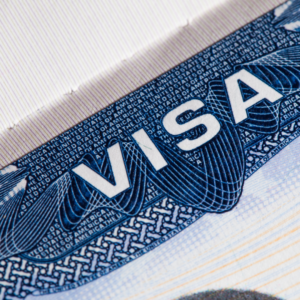
I added the “not” into the title of this piece. I was sitting at home over the weekend when I received an email from U.S. Citizenship and Immigration Services (“USCIS”) indicating that they had taken action on at least one of my cases. At this time of year, that’s a good sign for some (but not all) of our clients. That’s because USCIS had apparently completed it’s annual H-1B lottery registration process (although they’ve thus far not officially indicated that it’s been completed) and I received the email from USCIS titled “We Have Taken an Action on Your Case.” Some of my clients were selected in the H-1B lottery, others were not.[1]
For those clients who were not so fortunate to have been selected in the H-1B lottery, some will explore other visa options. For others, the H-1B visa could still actually be an option. That is, some employers are eligible to file what are called “cap-exempt” H-1B nonimmigrant petitions if they are an institution of higher education, a non-profit entity which is “related to” or “affiliated with” an institution of higher education, a non-profit research organization, or a government research organization. Let’s delve into this a bit.
There is an exemption from the H-1B cap for certain employees of educational and nonprofit institutions. Specifically, a foreign national will not be subject to the H-1B cap if he or she “is employed (or has received an offer of employment)” at any of the following institutions: (a) an “institution of higher education”; (b) a nonprofit entity related to or affiliated with an institution of higher education; (c) a “nonprofit research organization”; or (d) a “governmental research organization.”[2] Although some of the above exemptions may seem obvious (e.g., employees of colleges or universities), there’s a lot packed into these four exemptions, some of which have regulatory guidance that allow for some very creative lawyering and business opportunities.
For example, some private employers may petition under this provision if the employee will physically work “at” the institution of higher education or related or affiliated nonprofit and there is “nexus” between the work performed and the normal purpose of the institution of higher education. In this instance, the private employer would be considered a “third party petitioner”. According to USCIS’s regulatory guidance, a third party petitioner is one who petitions on behalf of an H-1B worker who will work “at” a qualifying institution, but where the alien is or will be employed by the third party petitioner, not the qualifying institution.
To qualify as an affiliated entity under these regulations, the private employer would have to show that it has entered into a formal written affiliation agreement with an institution of higher education that establishes an active working relationship between the private employer and the institution for purposes of research or education, and a fundamental activity of the private employer is to directly contribute to the research or education mission of the institution of higher education.
The reasoning behind this broadening of the cap exemption appears in USCIS’s legacy Adjudicator’s Field Manual:
Congress deemed certain institutions worthy of an H-1B cap exemption because of the direct benefits they provide to the United States. Congressional intent was to exempt from the H-1B cap certain alien workers who could provide direct contributions to the United States through their work on behalf of institutions of higher education and related nonprofit entities, or nonprofit research organizations, or governmental research organizations. In effect, this statutory measure ensures that qualifying institutions have access to a continuous supply of H-1B workers without numerical limitation.
Congress chose to exempt from the numerical limitations … aliens who are employed ‘at’ a qualifying institution, which is a broader category than aliens employed ‘by’ a qualifying institution. This broader category may allow certain aliens who are not employed directly by a qualifying institution to be treated as cap exempt when needed to further the essential purposes of the qualifying institution.[3]
So, how does this play out in the real world? If a petition is filed by a company that is not one of the four obvious types seemingly eligible for an exemption, but the beneficiary of that petition will spend the majority of his or her work time at a qualifying cap exempt entity (e.g., an exempt non-profit hospital, or a college or university), the H-1B petition may still be exempt from the cap, provided the job duties directly and predominately further the essential purpose, mission, objectives, or functions of the qualifying cap exempt entity. That is, the H-1B petitioner must show a “nexus between the work performed by the H-1B” and the purpose or functioning of the qualifying entity.
Creative lawyering? Maybe. Or perhaps not. Often times employers have relationships with qualifying entities that may already be eligible for the H-1B cap exemption, or with a little tinkering, could be. It just takes a little looking into.
For those that do not, over the next few months, I will continue to explore alternatives to the H-1B visa program. Often times if employers or foreign nationals are willing to think creatively, or take a longer view of a process that may involve multiple steps, a solution can come into a view and goals can be achieved.
[1] As a reminder, there’s a quota on the number of available H-1B visas of 65,000 in each government fiscal year, plus an additional annual quota of 20,000 for beneficiaries who have earned a master’s or higher degree from a United States institution of higher education. In the last few years, there’s been between 201,000 and almost 275,000 registrations for these coveted 85,000 visa numbers.
[2] INA §214(g)(5) (citing 20 USC §1001(a)); H-1B Visa Reform Act of 2004, Pub. L. No. 108-447, §425; American Competitiveness in the Twenty-First Century Act of 2000 (AC21), Pub. L. No. 106-313, §103 (Oct. 17, 2000).
[3] AFM 31.3(g)(13)(A)(i).
